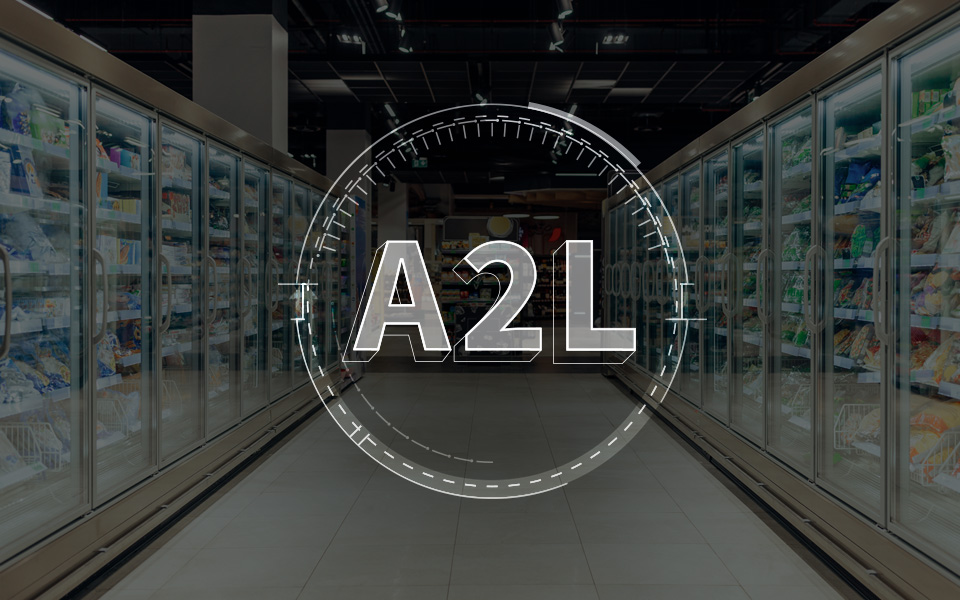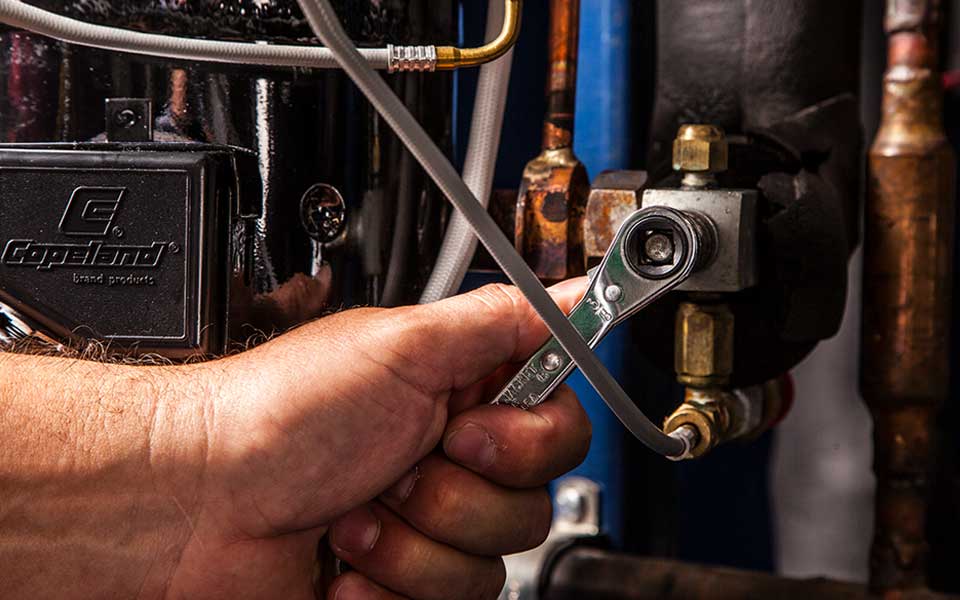*On June 1, 2023 Emerson’s Climate Technologies business became a new standalone company – Copeland. Though our name has changed, we are building on more than a century of HVACR innovation and industry leadership, and Copeland continues to offer the same products, industry stewardship, and learning opportunities you’ve grown to trust. Information found on this webpage posted before June 1, 2023 may contain our old name or branding, but you can be at ease knowing it was created with the knowledge and expertise of Copeland.

The service impacts of refrigerant regulations
Imagine showing up to a job site and not knowing which refrigerant is being used in the refrigeration or AC system. According to Martin Hoover, owner of Empire Heating & Air Conditioning in Atlanta, this has become an all too common scenario. “When pressures aren’t reading true, we have to start from scratch with a total refrigerant evacuation, recovery and recharge before even attempting a diagnosis,” he said. Hoover noted that the transition from legacy refrigerants to today’s lower-GWP options comes at a cost, even for those refrigerants that are considered “drop-in” replacements.
Michael Duffee, owner of Restaurant Equipment Services, Inc. of Tucker, Ga., added that customers are not happy to see recovery and disposal fees tacked onto their bill, and this is putting competitive pressures to use shortcuts on small contracting businesses. “Many companies may not be following proper recovery protocols to win business, which can put companies like ours at a disadvantage,” noted Duffee. “It is obviously counterproductive from an environmental standpoint.”
When asked if customers were even interested in the trend toward using lower-GWP refrigerants, Duffee said that in his experience, cost considerations are his customers’ first priority. Even if their legacy systems are leaking, customers are reluctant to invest in replacement equipment. They may be more open to discussing new refrigerants when that investment eventually becomes inevitable.
Presenting new refrigerants as an opportunity to add value
Jim Wharton, area vice president of Link Network, ABM in Atlanta, serves a much larger enterprise customer base. He said his customers have demonstrated more interest in making these investments, and his company is trying to frame the transition as an opportunity. “It’s challenging to align customers’ goals with the available equipment options, but there are some cases where federal and regional regulations are forcing a change.” Wharton added that change isn’t always good news for customers, but he helps them understand the real values of their investment, including total lifecycle costs, energy efficiency and performance advantages.
Too many options result in too much complexity
All three of the contractors said that refrigerant uncertainty is also adding complexity to the equipment decision-making process. Hoover noted his customers are concerned about the long-term viability of the changes. “The last thing they want after investing in a new system is for it to be phased out in four to five years due to a refrigerant change.” All three contractors agree that the industry would benefit by standardizing. Hoover added, “Preferably, we’d like to see one refrigerant, not five or six different options, to replace the old ones.” He pointed out that many contractors simply aren’t able to carry multiple varieties of refrigerants in their trucks at all times. And since these different refrigerants often have unique performance characteristics, variety only adds complexity to service calls.
At Emerson, we’ve seen the wide range of new refrigerant options as a technical challenge, developing equipment and retrofits to accommodate and optimize their performances. But it’s our interactions with contractors and customers that give us insights into how options ultimately impact end users. Their answers shed much-needed light on potential solutions — such as a press toward a single, standard and regulatory-compliant refrigerant.

A2L Refrigeration Overview — Systems, Safety and Servicing Considerations
*On June 1, 2023 Emerson’s Climate Technologies business became a new standalone company –...

Servicing the Next Generation of Lower-GWP Refrigerants
*On June 1, 2023 Emerson’s Climate Technologies business became a new standalone company –...

Improve Food Safety by Shifting to Proactive Measures
*On June 1, 2023 Emerson’s Climate Technologies business became a new standalone company –...
